- Business Lists ›
- Top Brands ›
- Top 10 Agricultural Countries by GDP Contribution 2017
Top 10 Agricultural Countries by GDP Contribution 2017
Here is a list of the top 10 agricultural countries by GDP contribution 2017. Agriculture is the most important industry for any country and countries have been focusing on economic development to boost farming. The biggest countries in agriculture are leaders in production of wheat, rice, pulses etc. The top agricultural nations are China. India, USA. Indonesia etc.
Quick Glance :
Top Agricultural Countries by GDP in World 2017 are
1st Place : China
2nd Place : India
3rd Place : United States
4th Place : Indonesia
5th Place : Brazil
6th Place : Nigeria
7th Place : Turkey
8th Place : Japan
9th Place : Argentina
10th Place : Thailand
For More details about rankings and parameters, read on.
10. Thailand
Thailand is a country at the center of the Indochinese peninsula in Southeast Asia.
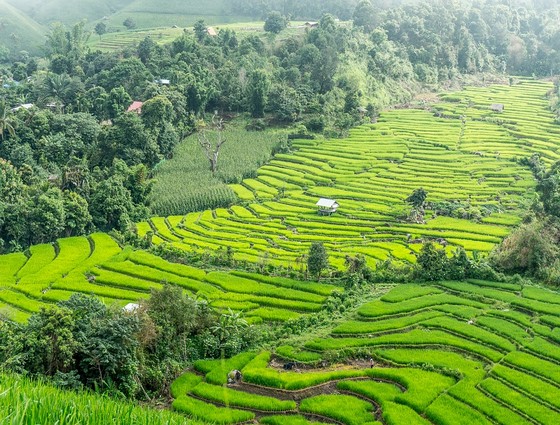
Image: pixabay
Thailand has a total area of about 513,000 sq.km with around 66 million people residing, and it is the world’s 50th largest country and 20th most populous country in the world. Thailand’s economy is the world’s 20th largest by Purchasing Power Parity and 27th largest by nominal GDP.
Agriculture is one of the major sectors contributing to the GDP of Thailand and the sector is also a highly competitive and diversified one. About forty percent of the workforce are associated with agricultural works in Thailand. It has an arable land of around 28% of the total land out of which 55% of the land is used for rice production. Rice is the most important crop of the country and is one of the leading exporters of rice.
Tapioca, rubber, grain and sugar are among the other agricultural produces of the country and significant amounts of fishery products and processed goods like frozen shrimp and canned tuna contribute to the exports of the country. Thailand is also a leading exporter of chicken meat and other commodities. It has only 0.3-0.5 percent of agricultural land certified as organic against a global average of 1%.
Agriculture Contribution to GDP: 13%
Agriculture GDP (Million $): 51949
9. Argentina
Argentina, a federal republic in South America, is eighth largest country in the world and second largest in Latin America.
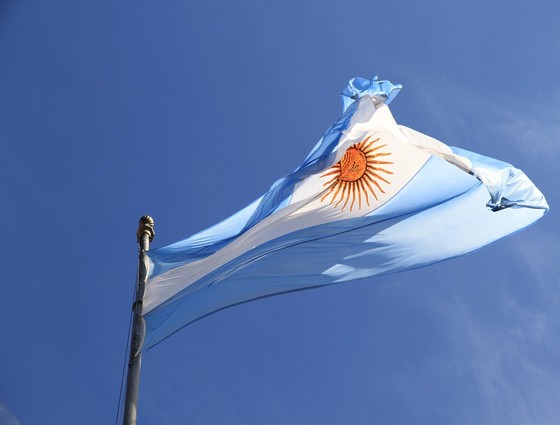
Image: pixabay
Argentina has a mainland area of 2,780,400 sqkm. Argentina has the second largest economy in South America, which can be attributed to the rich natural resources, a highly literate population, a diversified industrial base, and an export-oriented agricultural sector. It is also a member of the G-15 and G-20 major economies. Agriculture is one the primary drivers of Argentina’s economy. It is a world leader in organic farming, a farming method that excludes synthetic fertilizers and pesticides being used in farms. It has 3,061,965 hectares of organic cultivation which second only to Australia.
Citrus fruit, grapes, maize, honey, soybeans, sunflower, wheat are the major farming produces of Argentina and most of these produces contribute to the exports of the country.
The major cereal crops that are grown are wheat, maize, barley, oats and sorghum and oil crops like soybean and sunflower and industrial crops like cotton, cane, flax are produced in the country,
Agriculture makes up to 54% of the exports in Argentina. Their major agricultural product is wheat. Argentina is also the world’s fifth largest wine producer and a growing export, total viticulture is far from having been met. Argentine fisheries are also contributing to the agricultural sector which bring in about a million tons of catch annually.
Agriculture Contribution to GDP: 10%
Agriculture GDP (Million $): 54178
8. Japan
Japan is a sovereign island nation in East Asia and is considered as a great power.
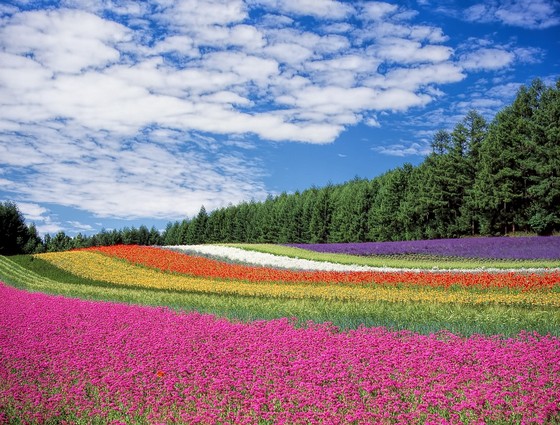
Image: pixabay
It is a member of the UN, the OECD, the G7, the G8 and the G20 nations. Japan is the world’s third-largest economy by nominal GDP only next to China and the US, and world’s fourth largest economy by purchasing power parity, after the United States, China and India. It is also ranked fourth in the import and export categories as well. Japan’s agriculture sector consisting of farming and fishing forms the primary sector of industry which accounts for only 1.3% of the total country’s GDP. Only twenty percent of the land is considered arable for cultivation and the agricultural economy is also highly subsidized. Government regulations favor small-scale cultivation instead of large-scale agriculture. But the current concern about farming is that the current farmers are aging and unable to find successors as the sector doesn’t seem that much attractive and lucrative.
Rice, wheat, potatoes and barley are the major contributors to the sector. Rice paddies occupy most of the country sides and intercropping is common in the country. Rice accounts for most of the Japan’s cereal production and is the most protected crop subject to a tariff of 777%.
Japanese fishing industry has been long centered on the Tsukiji fish market and maintains one of the world’s largest fishing nets which accounts for nearly 15% of the global catch. Japan has greatly advanced in the techniques of aquaculture.
Agriculture Contribution to GDP: 1.2%
Agriculture GDP (Million $): 56764
7. Turkey
Turkey, a transcontinental country in Eurasia, is a democratic, secular, unitary, parliamentary republic with a diverse cultural heritage.
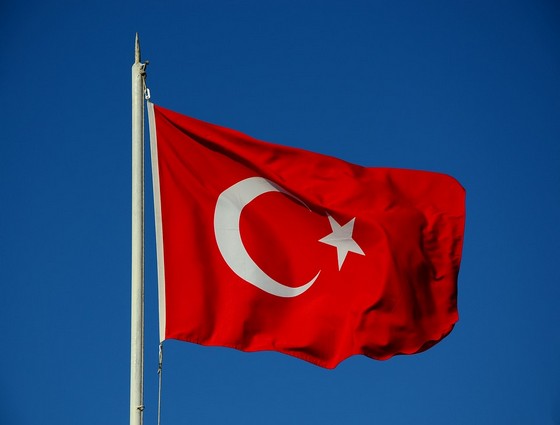
Image: pixabay
It is world’s 18th largest economy in terms of nominal GDP and 13th largest in terms of Purchasing Power Parity. It is also among the founding members of the OECD and the G-20. Turkey is also one of the largest countries in the world in terms of agricultural lands. About thirty-six percent of the country are arable lands and about fifty percent consists of forests
Animal husbandry contributes to one-fourth of the gross value of the agricultural production which is the main activity in the mountainous regions where farming is less practiced. Turkey has all conditions favoring growing of all kinds of crops due to fertile soil, adequate climate and abundant rainfall. It is one of the few self-sufficient countries of the world in terms of food.
The cultivation area is devoted to cereals production to as much as ninety percent. Wheat is the principal crop that accounts to fifty nine percent of the total grain production. Turkey is the leading producer of dried figs, hazelnuts, raisins and dried apricots and also one of the leading producer of honey in the world. European nations, the United States and middle east are the main export markets of the country. Wheat, Barley, sunflower, potato, tobacco, cotton, vegetables, dried fruits, fresh fruits and nuts are the major cash crops grown in Turkey.
Agriculture Contribution to GDP: 8.9%
Agriculture GDP (Million $): 67259
6. Nigeria
Nigeria, a federal republic in West Africa, is officially a democratic secular country.
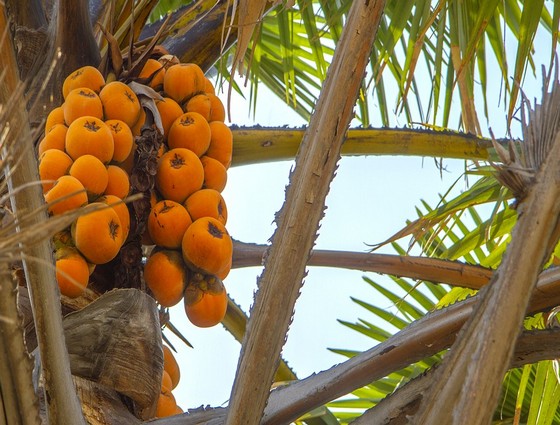
Image: pixabay
It is considered to be an emerging market by the World Bank and has been identified as a regional power on the African continent. Nigeria is often referred to as the “Giant of Africa”, owing to its large population and economy. It is the seventh most populous country in the world and the most populous country in Africa. Nigeria is the world’s 20th largest economy. Agriculture in Nigeria is provides employment for more than thirty percent of the population and the sector is being transformed by commercialization at small, medium and large-scale enterprise levels. Agricultural products of Nigeria fall under two categories; food crops produced for home consumption and exports.
Nigeria was famous for the export of groundnut and palm kernel oil in the past but the rate of export has reduced over the years.
Cocoa is the leading non-oil foreign exchange earner while rubber is the second-largest non-oil foreign exchange earner. In the recent article by Chairman of All Progressives Congress, APC, Chief John Odigie- Oyegun said that the current recession in the country has forced the government to invest at all levels of agriculture to become one of the biggest exporters of farm produce in the next two years.
Agriculture Contribution to GDP: 17.8%
Agriculture GDP (Million $): 73884
5. Brazil
Brazil, is a federative republic located in South America and is the largest country in both South America and Latin America.
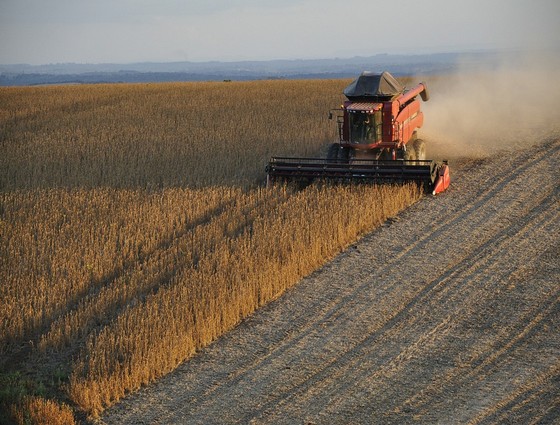
Image: pixabay
It is also the world’s fifth largest country by area and population. Half of Brazil is covered by forest and world’s largest rain forest is in the Amazon Basin and, it is ranked ninth in the economies based on nominal GDP and eighth based on GDP (Purchasing Power Parity) as of 2016. Thirty one percent of the total land area is agricultural area and agriculture is the principal bases of Brazil’s economy as the country has immense agricultural resources available to it. The cultivation area covers 65,338,804 hectares of land. While Northern Brazil and Central brazil are not much suitable for irrigation and farming, the Southern Brazil is fertile and well irrigated and fed. Brazil was initially producing sugarcane and now has become the largest exporter of coffee, soybeans, beef and crop-based ethanol.
Brazil is called the breadbasket of the world and major supplies are sugarcane, soybeans, coffee and corn. The principal agricultural products of Brazil are cattle, coffee, soy, wheat, sugarcane, tobacco, beans, forestry, vegetables etc.Coffee, soybeans, beef, sugarcane, ethanol and frozen chickens are the most significant exports of brazil.
Agriculture Contribution to GDP: 5.4%
Agriculture GDP (Million $): 95558
4. Indonesia
Indonesia, officially the Republic of Indonesia, is a transcontinental country located in the Southeast of Asia.
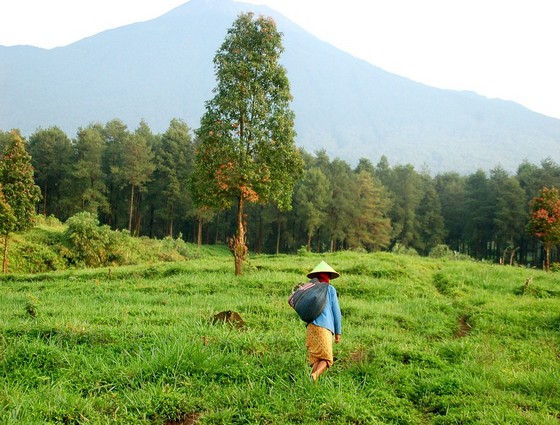
Image: pixabay
It is the world’s largest island country with more than seventeen thousand islands situated in between the Indian and Pacific oceans. It is world’s seventh largest country in terms of combined sea and land area and world’s fourth most populous country. The Indonesian agricultural sector remains large, comprising 14% of the country’s aggregate Gross Domestic Product (GDP). It comprises of large plantations which are both state-owned and private and smallholder production modes.
The larges plantations are to focus on commodities which are important export products like palm oil and rubber, while the small hold farmers produce rice, soybeans, corn, fruits and vegetables. Self-sufficiency has been placed high on agenda by the Indonesian government. It applies to rice as it is the main staple food for the majority of the population; Indonesia has the highest per capita rice consumption in the world. Rice is produced mainly in irrigated or lowland systems. Rice, corn, cassava, soybeans, grains, pulses, cassava, maize, groundnuts, sweet potato and peanuts are the major food crops harvested in Indonesia. Tree crops like rubber, copra, palm kernels, palm oil, coffee, cocoa and spices form a major chunk in the export food products of Indonesia.
Agriculture Contribution to GDP: 14.3%
Agriculture GDP (Million $): 134556
3. United States
The United States of America is a federal republic located in North America between Canada and Mexico.

Image: pixabay
It is the world’s third largest country by land area and third most populous country. It homes the world’s largest immigrant population which makes the country most ethnically diverse and multicultural. Agriculture industry is a major contributor in the United States, which is a net exporter of food. Agriculture area in United States covers an area of 922 million acres with 2.2 million farms and each farm averaging 418 acres of land. United States is a leader in getting technological advancements in the crop production and leader in seed improvement. U.S. agriculture has a high yield relative to other countries due to heavy mechanization.
Corn, tomatoes, peanuts and sunflower seeds are the major holdovers from the agricultural endowment of the Americas. United States cover 50 states in 9,857,306 sq.km of land and is a predominantly at service sector based economy. The population working in the agriculture sector contributes to only 2% against 50% while in 1870. GDP contribution from service sector is also 97%. It is estimated that the agricultural land of United States is 45% and US is best known for its Corn Production. Almost 23% of the products are exported from the agricultural produces every year.
Agriculture Contribution to GDP: 1.12%
Agriculture GDP (Million $): 215364
2. India
India, the most populous democracy in the world, is a country in South Asia.
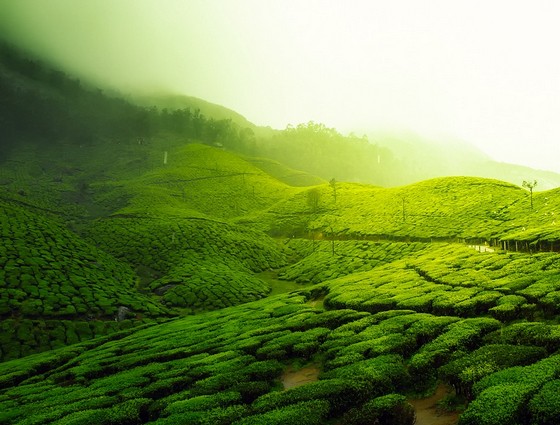
Image: pixabay
It is also the second most populous country in the world and the seventh largest country by area. India is one the fastest growing economies of the world and according to the International Monetary Fund(IMF), the Indian economy is the sixth largest economy by exchange rates with nominal worth of US$2.454 trillion and third largest by purchasing power parity(PPP). The service sector makes up 55.6% of GDP, the industrial sector 26.3% and the agricultural sector 18.1% of GDP. Agriculture, with its allied sectors like fisheries and forestry, plays a vital role in India’s economy and is one of the largest contributors of the Gross Domestic Product. Agriculture is also the largest livelihood provider in India as over 58% of the rural households are dependent on agriculture. Agriculture and allied sectors is estimated to grow at 4.1% for 2016-17.
India is the largest producer of spices and spice products and is also the second largest fruit producer in the world. It is ranked third in farm and agricultural outputs. India is also second largest producer of wheat and rice which are the world’s major food staples. The industry is divided into several segments like dairy, food grains, frozen food, meat, poultry and fisheries.
Due to increased investments in agricultural facilities like irrigation, warehousing, storage and genetically modifying crops to increase the yield will generate momentum to the agriculture sector in India in the next few years.
Agriculture Contribution to GDP: 17.4%
Agriculture GDP (Million $): 391672
1. China
China, a unitary sovereign state in East Asia is the world’s most populous country has a population over 1.4 billion.
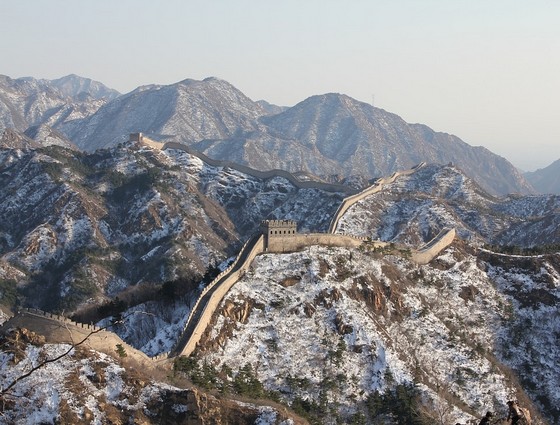
Image: pixabay
China is the world’s second largest economy in nominal GDP and world’s largest economy by purchasing power parity. It is also the world’s second largest country by land area. It is also the world’s largest exporter and second largest importer of goods. China has 54.81 % agricultural land of the total land area and contributes to total of more than 12% of the total GDP of the country. More than 300 million people are working in the agricultural sector in China which is almost 50% of the total workforce that China has got. It is the top most country in case of the farming output and the produce includes wheat, millets, rice, potatoes, cotton and many other produces.
Agricultural land contributes to 5145530 sq.km of the total area of China. It produces 20 percent food for the world’s population although it accounts for only 10 percent of the arable land worldwide.
China is the largest importer of the soybeans crops and is expected to be the top importer of farm products within the next decade. Employment in agriculture constitutes to 28.3% of the total employment in China. Rice is considered to the most important food crop in China followed by wheat production. China also accounts to one-third of total fish production of the world.
Agriculture Contribution to GDP: 8.6%
Agriculture GDP (Million $): 964772
Rank Methodology
1. The countries with the highest GDPs and agricultural activities are considered
2. The percentage of GDP is taken as a criterion and the contribution to GDP is calculated
3. Based on that the final rankings are evaluated
This article has been researched & authored by the Content & Research Team which comprises of MBA students, management professionals, and industry experts. It has been reviewed & published by the MBA Skool Team. The content on MBA Skool has been created for educational & academic purpose only.
Browse similar company lists across 50 sectors. The top brand lists category covers rankings of companies based on various parameters.
Continue Reading:
What is MBA Skool?About Us
MBA Skool is a Knowledge Resource for Management Students, Aspirants & Professionals.
Business Courses
Quizzes & Skills
Quizzes test your expertise in business and Skill tests evaluate your management traits
Related Lists
All Business Sections
Write for Us